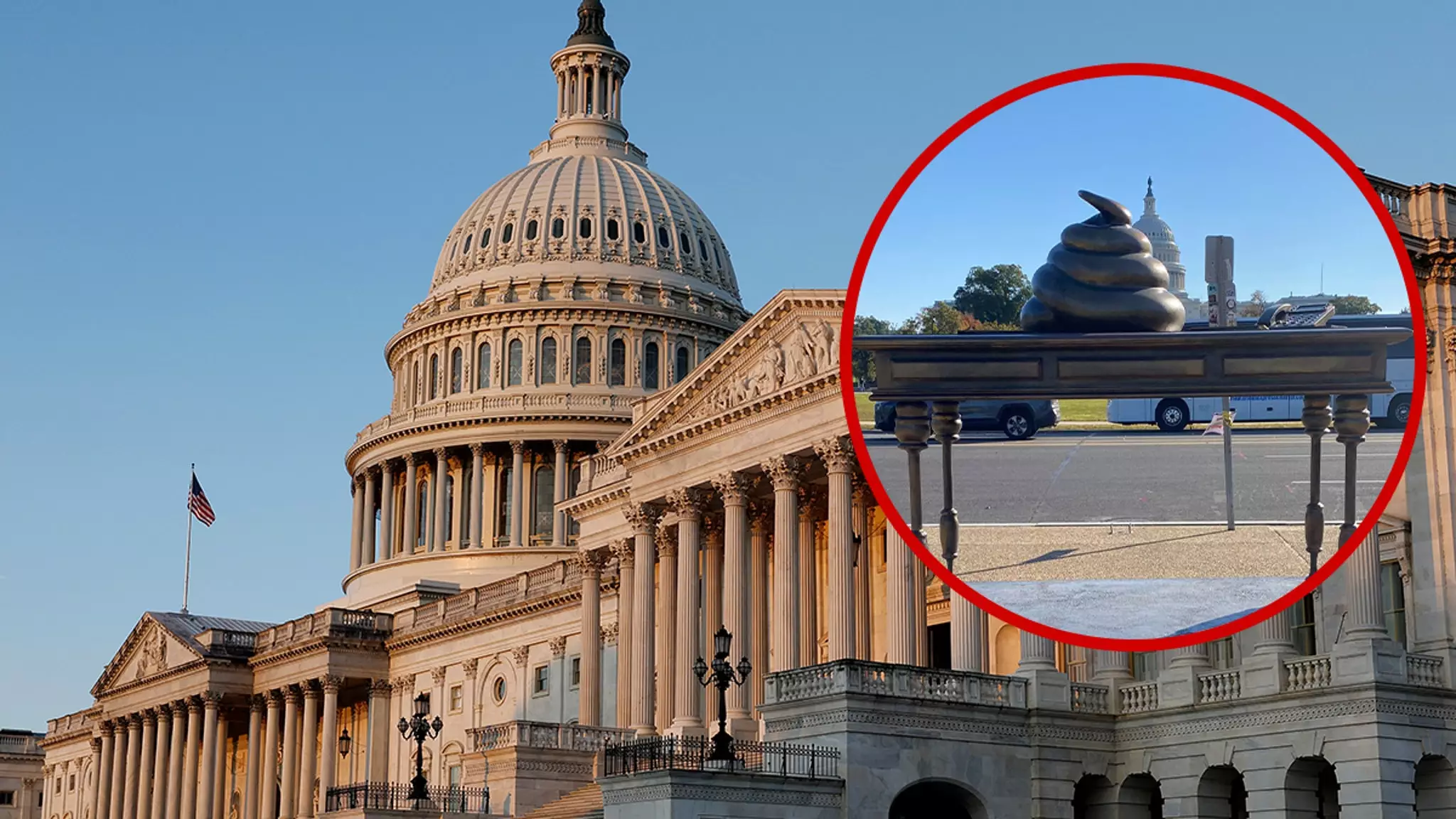In a surprising artistic twist, a new monument has emerged in the heart of Washington, D.C., directly across from the iconic U.S. Capitol. This unconventional creation aims to deliver a striking commentary on the events surrounding the January 6 insurrection and lays bare the complexities of political discourse in the United States today. Its audacious design—a bronze statue featuring an oversized feces sculpture perched on a desk adjacent to a nameplate bearing former House Speaker Nancy Pelosi’s name—serves as both a mock tribute and a biting critique of the events of that fateful day.
This faux monument, while clearly designed to elicit strong reactions, raises important questions about the role of art in political protests. The attached plaque reflects the artist’s provocative take on the January 6 riot, describing the insurrectionists as “brave men and women” who resorted to looting and vandalism in their quest to overturn the 2020 election results. The language employed is intentionally hyperbolic, portraying the rioters in an almost heroic light, before quickly juxtaposing that with the chaotic and degrading acts that actually occurred. This dual portrayal captures the absurdity of their actions and invites viewers to confront the deeper implications of such behavior in a democratic society.
Further complicating the message, the inscription also takes aim at former President Donald Trump, labeling him as a champion of these so-called patriots. By branding the insurrectionists as “warriors” and “unbelievable patriots,” the text provides a scathing indictment of the narrative that has accompanied the former president’s long-standing base. This inclusion effectively places Trump at the center of the debate, illustrating the divisive climate surrounding his political identity and its repercussions on American democracy.
Responses to this installation reveal the profound polarization present in contemporary American politics. For some, it serves as a humorous reminder of the chaos that ensued on January 6, while for others, it might be viewed as a deeply offensive stunt. The monument’s origin remains shrouded in mystery, but its appearance ahead of the 2024 election suggests a calculated statement aimed at rallying opposition to Trump’s potential candidacy. As over a thousand individuals face legal repercussions for their roles in the insurrection, this monument encapsulates not only a critique of past actions but also an appeal to ongoing civil engagement and accountability.
Ultimately, whether seen as a piece of garbage or a bold political statement, this unique sculpture exemplifies how art can challenge norms and provoke critical dialogues surrounding the state of democracy in the United States. By marrying satire with serious commentary, this new monument serves as a reminder of the complexities inherent in political movements and the continuing struggle for truth and justice in America. As the 2024 election approaches, one thing is certain: the legacy of January 6 will continue to inspire, provoke, and challenge public sentiment for years to come.

